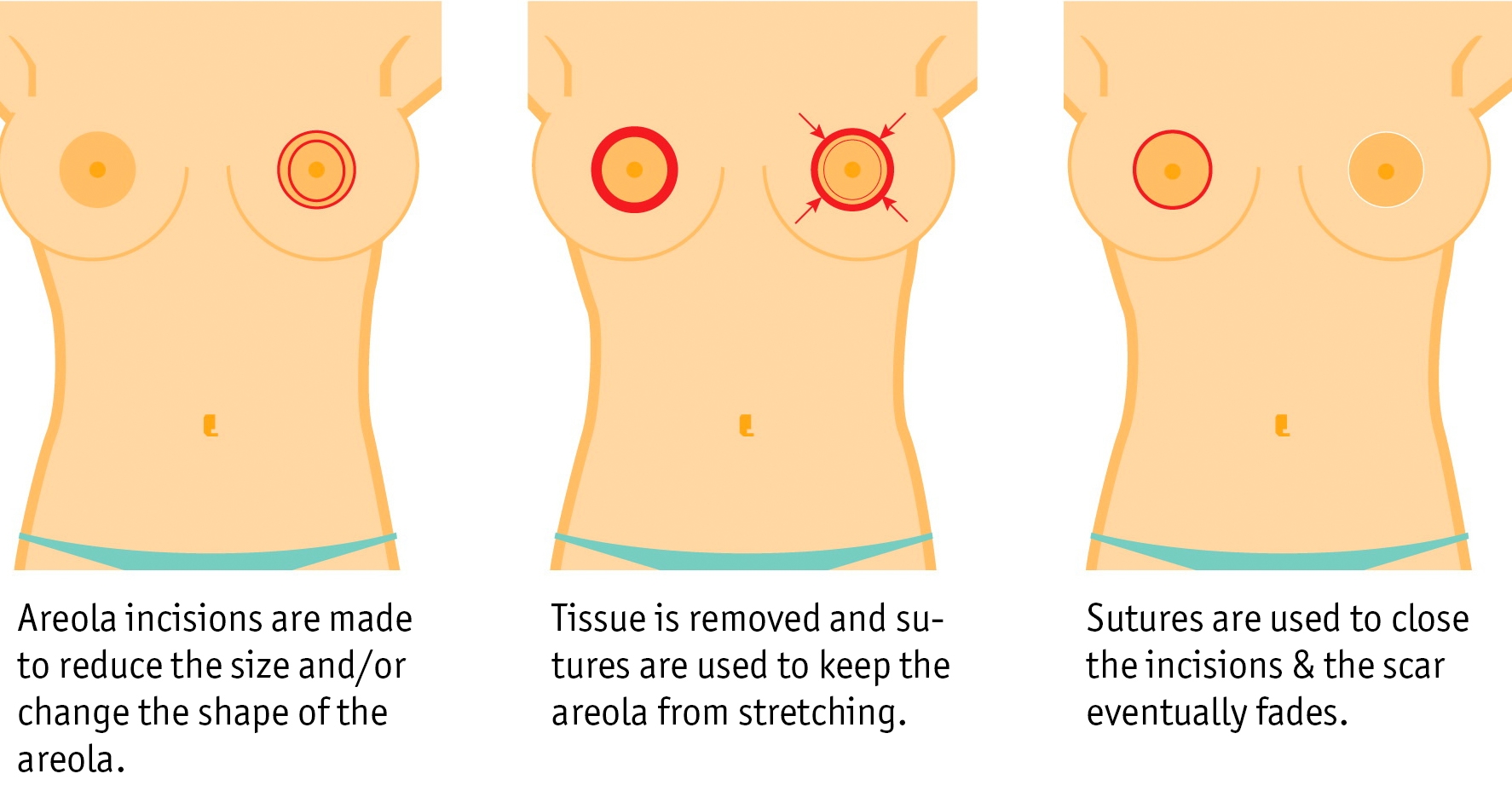Areola Reduction Surgery
The areola is the dark-pigmented skin that surrounds the nipple. Large areolas may look out of proportion with the rest of the breast. This is especially noticeable if the patient has had a breast reduction or breast lift, but it can also occur naturally (often after childbirth). There are no medical complications associated with having large areolas, but self-esteem and body image can be greatly affected. Areolar reduction can help women looking for a smaller diameter and rounder areolae or those who would like to reduce puffy or bulging areolae.

The Areola Reduction Consultation
Inform your surgeon of any allergies, all medical conditions, and any medication that you are taking (both prescription and non-prescription). Avoid aspirin and blood thinning medication such as brufen for two weeks prior to surgery to eliminate the chance of post-op. bleeding. Dr Barnouti will also examine your areolae to decide on the best technique to perform the surgery.
The Areola Reduction Surgery
A round ring-like strip of the excess areola will be removed on the peripheral part of the operated areola. The edge of the new smaller areola will be sutured to the outer normal skin which will create many small pleats around the created areola. If the pleat is too much, the surgeon may decide to include the vertical removal of the skin strip under the areola to avoid too many pleat formations that will resolve themselves in a few months.
The procedure takes 1 hour and is usually done under local anesthesia with some sedation if required.
After Areola Reduction Surgery
The waterproof dressing will be applied for one week. You will be able to shower the following day. You will need to return one week after for wound review. The pain usually settles with simple analgesia. Recovery time will depend on the patient, but most patients can return to work and resume their normal activities within a day or two.
Areola Reduction Outcome
Following surgery, your areola will be balanced and proportionate in size and shape to the nipples. In the first week, they will already have a natural and presentable appearance, and over the next few months, they will continue to improve. The results will last for the rest of your life.
Breast Feeding and Areola Reduction
The described above technique does not normally affect the ability to breastfeed.
Areola Reduction Risks and Complications
Risks are inherent to any surgical procedure. The most common risks are swelling, bruising, bleeding, infection, or a loss of sensation to the nipple and areola; however, they are rare and almost always temporary.
Areola Reduction Costs
Total cost: $4,900 (including Surgeon’s fee, Assistant Surgeons fee, Anaesthetist’s fee, Hospital, operating theatre and all follow-up visits costs).